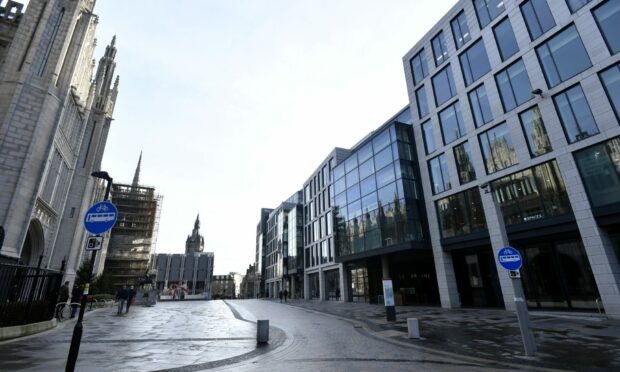Commercial property-focused Lismore has launched its latest quarterly review of the Scottish investment market and, with the COP26 climate summit in Glasgow just weeks away, it is no surprise sustainability is a key theme.
As well, as the usual market statistics, Lismore presented findings from research among a range of investors to assess the impact of sustainability with purchase considerations and market pricing.
It also offered its top five green predictions.
Investments on an upward curve
The review pointed to a likely strong run to the year-end after a significant increase in investment deals in Q2 and a further “marginal” rise in the third quarter of 2021.
A total of £350 million was transacted during the three months to September, down by 30% on the five-year average, Edinburgh-based Lismore said.
There has been a noticeable bounce for the “previously beleaguered” leisure market, with restaurants and bars benefiting from increased footfall following the re-opening of offices, the report added.
Q4 is expected to be better again
Lismore director Chris Macfarlane said: “The quantity of stock coming to the market remains restricted, however, with a number of significant deals under offer we expect the volume traded in quarter four to be significantly higher.”
With COP26 being held in Glasgow next month, the property sector spotlight is on the environment and climate change like never before.
Lismore’s research revealed sustainability as one of the key investment considerations in the market just now – rated as the third most important factor by 74% of respondents.
The bottom line is that sustainability is here to stay.”
Chris Macfarlane, director, Lismore.
More than two-thirds (67%) anticipate the office sector will see the greatest impact from sustainability, with retail and industrial expected to be impacted least, at 37% and 47% respectively.
The office sector, in particular the prime end, is most in focus – driven primarily by corporate occupier requirements for staff wellbeing but also to meet their net-zero carbon pledges, the report said.
Mr Macfarlane added: “The bottom line is that sustainability is here to stay and its influence on assets from an investment perspective is becoming ever more pronounced.
“The more sophisticated investor pool – UK and overseas funds, Reits (real estate investment trusts), listed property companies and established investment managers – are all totally in tune with the sustainability agenda and aiming to play their part in driving it.”
The prime office sector is seeing an emergence of a tiered market, with the greenest buildings able to attract the strongest interest from European and global funds, Lismore said.
Other sectors catching up
In other sectors, including industrial and retail warehousing, the immediate effect “seems less pronounced” but it is only a matter of time before they catch up, the report added.
Lismore continued: “There remains a serious appetite from sophisticated investors to fulfil their ESG (environmental, social and corporate governance) credentials, so the opportunity for green funds can only continue to grow.
“Elsewhere, developers who acknowledge the sustainability agenda and build it into design will benefit, not only from improved tenant demand perspective, but also from wider investor appeal on exit and ultimately the strongest possible pricing.”
Colliers reports an improved picture – but calls for ‘clarity’ on office return
Is Dolly’s 9 to 5 office routine a thing of the past?
Lismore’s top five green predictions
- Impact investing is here to stay. Whether it be dedicated green funds or simply meeting corporate ESG credentials, existing property owners who bury their heads in the sand and are not thinking about sustainability do so at their own peril.
- A two-tier market is starting to appear in the prime office market. At the super prime end, there will be a premium paid for the greenest buildings.
- Increased legislation – the built environment creates about 40% of carbon emissions globally and continues to be in government sights.
- Cost inflation: Future-proofing buildings to meet sustainability criteria is an additional development/holding cost that is likely to rise.
- COP26 will put Glasgow on the global stage and is a “fantastic opportunity” for Scotland’s largest city to be associated with addressing climate change.


